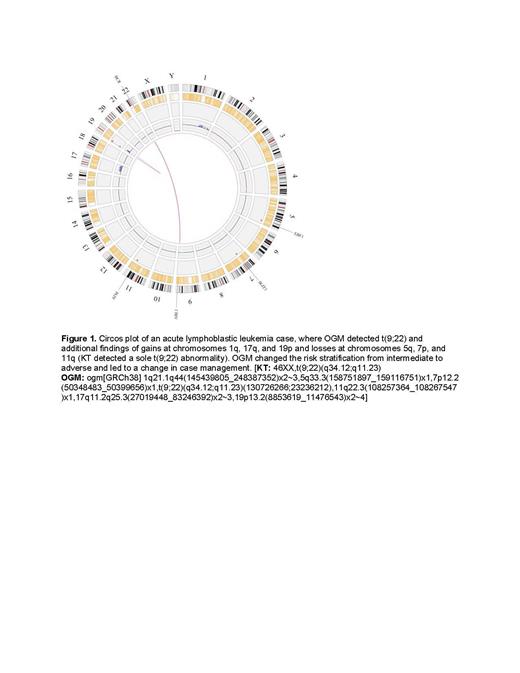Genomic structural variants (SVs) are key in understanding the pathogenesis of hematologic malignancies. The current standard-of-care (SOC) cytogenomic methods, including chromosome karyotyping (KT) and fluorescence in situ hybridization (FISH), have inherent limitations in identifying SVs, while next-generation sequencing technologies have limited ability to detect most SVs. Optical Genome Mapping (OGM) is a high-resolution cytogenomic technique that overcomes the limitations of SOC cytogenomic methods and detects all classes of SVs. Recent studies, mostly retrospective, have demonstrated OGM's analytic validity and clinical utility for detecting SVs in both hematologic malignancies and constitutional genetic disorders. This prospective study, using OGM as a validated laboratory developed test (LDT) for detection of SVs, included 112 patients with a wide variety of hematologic malignancies undergoing clinical evaluation and management and demonstrates OGM as superior to SOC cytogenomic methods.
Patient blood or bone marrow samples were subject to the Bionano OGM-Dx™ HemeOne assay. OGM analysis was successful for 105/112 (94%) samples with 7/112 (6%) samples failing analysis. Of the 105 analyzed samples, 74 (70%) had abnormal and 31 (30%) had normal findings by OGM analysis, with 49% of abnormal OGM findings classified as complex. At initial diagnosis, 49 cases had guideline and SOC result-based disease risk stratification with 18/49 (37%) graded as high risk, 15/49 (31%) as intermediate risk, and 16/49 (32%) as low risk.
Additionally, 60 cases had SOC cytogenomic analysis (KT or FISH) results available; 37% with KT and FISH, 27% with only KT, and 35% with only FISH. OGM cases with normal findings were concordant with KT in 9/10 (90%) of cases and FISH in 8/12 (67%) of cases. For those cases that had abnormal findings by KT and/or FISH, OGM detected additional cytogenomic findings in 79% of cases. A change of risk stratification was made in 12/42 (29%) of cases with additional findings by OGM analysis compared to KT and/or FISH; 9/12 (75%) with upgraded risk and 3/12 (25%) with downgraded risk stratification. In 10/42 (24%) of cases, OGM findings resulted in a change in therapeutic management recommendations. This is exemplified by an acute lymphoblastic leukemia case: KT detected a sole t(9;22) abnormality however, OGM detected t(9;22) and additional findings of gains at chromosomes 1q, 17q, and 19p and losses at chromosomes 5q, 7p, and 11q (see figure 1), changing the risk stratification from intermediate to adverse and directly leading to a change in therapeutic management.
The impact of OGM on disease risk stratification and case management is in alignment with previously published studies with OGM analysis demonstrating its power to detect additional findings not seen by SOC cytogenomic analysis. The prospective study outcomes suggest a significant role for OGM in delivering comprehensive results for improved diagnostic assessment and significant prognostic information for better case management and care compared to SOC cytogenomic methods.
Disclosures
Wicks:Bionano: Current Employment, Current equity holder in publicly-traded company, Current holder of stock options in a privately-held company. Younan:Bionano: Current Employment. Sahoo:Bionano: Current Employment. Hauenstein:Bionano: Current Employment. Mylavarapu:Bionano: Current Employment. Matthews:Bionano: Current Employment. Hovanes:Bionano: Consultancy.


This feature is available to Subscribers Only
Sign In or Create an Account Close Modal